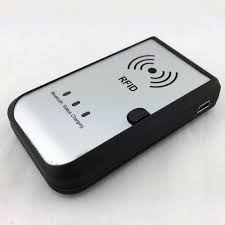Introduction
The retail industry is evolving rapidly, driven by technological advancements that improve efficiency, accuracy, and customer satisfaction. Among these innovations, tag readers play a crucial role in streamlining operations. From barcode scanners to RFID (Radio-Frequency Identification) systems, readers help retailers manage inventory, speed up checkouts, and reduce losses.
What Are Tag Readers?
These readers are electronic devices that capture data from tags, labels, or chips attached to products. They decode information such as product details, pricing, and stock levels, enabling seamless retail operations.
Types of Tag Readers in Retail:
- Barcode Scanners
- The most common type, using laser or image-based technology to read barcodes.
- Used in checkout counters, inventory tracking, and warehouse management.
- RFID Readers
- Use radio waves to read data from RFID tags without direct line-of-sight.
- Ideal for high-speed inventory checks and anti-theft systems.
- NFC (Near Field Communication) Readers
- Enable contactless payments and smart shelf technology.
- Commonly used in mobile payments and interactive retail displays.
Each type serves a unique purpose, but all enhance operational efficiency and customer experience.
How Tag Readers Improve Retail Operations
1. Real-Time Inventory Management
Manual stock-taking is time-consuming and error-prone. These readers automate inventory tracking, reducing discrepancies and stockouts.
- RFID systems can scan hundreds of items per second, making stock audits faster.
- Barcode scanners integrate with POS systems to update inventory in real time.
*According to a study by McKinsey, retailers using RFID see a 25-30% reduction in out-of-stock scenarios.*
2. Faster Checkouts & Reduced Queues
Long checkout lines frustrate customers. Modern readers speed up transactions:
- Self-checkout kiosks with barcode scanners reduce wait times.
- RFID-enabled smart carts allow instant payment as customers leave the store (e.g., Amazon Go).
3. Loss Prevention & Anti-Theft Measures
Retail shrinkage costs businesses $100 billion annually (National Retail Federation). Tag readers combat theft by:
- Triggering alarms if unpaid RFID-tagged items pass through exits.
- Tracking high-value items with electronic article surveillance (EAS) tags.
4. Enhanced Customer Experience
- Smart shelves with RFID detect low stock and alert staff.
- Mobile price checkers let shoppers scan barcodes for instant product info.
Real-World Applications
Case Study: Zara’s RFID Implementation
Zara, a global fashion retailer, uses RFID readers to:
- Track every item from warehouse to store.
- Reduce stock discrepancies by 98%.
- Enable employees to locate products instantly.
Walmart’s Barcode & RFID Integration
Walmart mandates RFID tagging for suppliers, improving:
- Supply chain visibility.
- Automated reordering to prevent stockouts.
Future Trends
- AI-Powered Tag Readers
- Machine learning enhances scanning accuracy and fraud detection.
- Blockchain for Supply Chain Transparency
- RFID tags linked to blockchain ensure product authenticity.
- IoT-Enabled Smart Stores
- Sensors and tag readers create fully automated shopping experiences.
Conclusion
These readers are transforming retail by improving inventory accuracy, speeding up checkouts, and reducing losses. As technology advances, RFID, barcode scanners, and NFC systems will become even more integral to retail success.
Retailers investing in reader technology today will gain a competitive edge—enhancing efficiency, customer satisfaction, and profitability.


